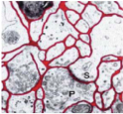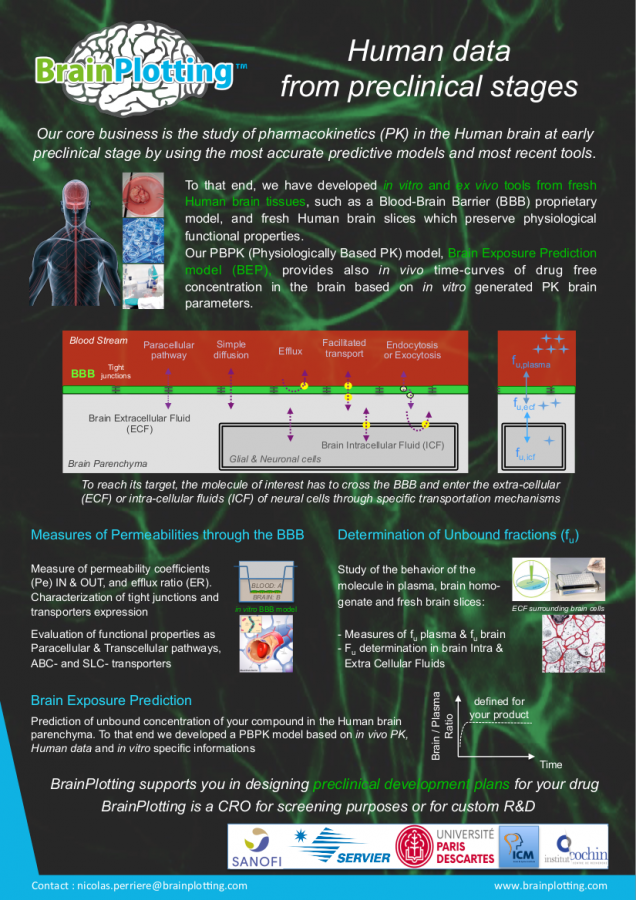To be as close as possible to the in vivo Human situation, we exclusively use fresh Human brain tissues and we are specialized in in vitro cultures of brain and cells tissues. You can find in our portfolio high performance tools allowing us to know and predict the intracerebral concentration of your molecule.
I. Blood brain barrier (BBB) models
Resulting from many years of R&D, we propose reliable and well-characterized BBB models to determine the permeability of specific compounds: from blood to brain; as well as from brain to blood. We also propose custom toxicological studies.
Briefly, after a gentle isolation of capillaries from brain tissue, we select brain endothelial cells and amplify them before a passage on inserts of culture in specific conditions.
We obtain pure, confluent and monolayered cultures of brain endothelial cells, with a characteristic spindle shape phenotype. These cells express in particular tight junctions protein, conferring a notable impermeability to hydrophilic compounds, and functional transporter – efflux and influx proteins - at physiological rate.
All experimentations are done before use between 10 and 15 days of culture.
II. Determination of the unbound fraction (fu) in the blood and in the brain parenchyma
The unbound fraction of a compound (fu) is its active and functional concentration. This fraction can interact with its environment and then cross biological membranes and activate pharmacological targets.
1 Determination of the unbound fraction in Human blood
In the blood, the compound can bind to albumine, a large protein (65 kDa approximately), which neutralize all activity of the molecule. We then use fresh human plasma to determine the unbound fraction in vitro as a model to what happens in the Human body.
Blood and brain unbound fractions are not correlated and can differ a lot. In the brain parenchyma, we have two different and complementary approaches:
2 Determination of the unbound fraction in Human brain homogenate
A Brain tissue homogenate is prepared by sonication and the compound is mixed with this protein and lipid mix specific to the Human brain. The fraction left unbound to the homogenate will then be the fraction which will potentially cross BBB membranes and interact with pharma-active targets. These data can be compared with the plasma unbound fraction.
3. Determination of the unbound fraction in fresh Human brain slices
The compound is exposed to thin slices of living brain tissue until equilibrium. The unbound concentrations in brain cells and in the extracellular fluid (interstitial fluid) are then measured. In this situation where the BBB is no more operational, the behavior of the compound inside the brain parenchyma can be determined. Specific transport mechanisms in brain cells (neurons, glial cells,…) can also be studied with this tool.
All these data can be combined with PBPK approaches to model the Human in vivo concentrations on the basis of Human in vitro data.
For more informations, please consult our information leaflet
 English
English Français
Français





